This weeks showcase features leathery skin, the pungent smell of decay and everlasting hatred. My, what a menu! We take the fairly funky Reaper sculpt Leisynn Mercenary Mage sculpted by Tim Prow and convert it to an ancient Lich. I will also focus on how to paint illuminated book pages. So keep your smelling salts at the ready and descent into the lair of the Lich.
As far as sculpts go Leisynn is definitely imaginative. The Bones version suffers of limp staff, but I guess a Lich really doesn’t care anymore. Otherwise the sculpt is nicely detailed, crisp, but naturally not as good as the metal version. With his horns and snake he sure looks demented. As I mentioned before, Bones miniatures are perfect for conversions. Easy to cut and cheap, so don’t try this with the metal Leisynn.
Triming the fat
Leisynn’s story is a sad one. He was once a half painted wizard in a dark storage box. The years of captivity took their toll and he lost all his marbles. Once released he underwent a painful procedure to take horrible revenge. Little did he know that his captor was also his surgeon.
The first step is to remove all the unwanted detailing: In my case the head and hair, most of the front detail, and the staff. I kept the parts, as they might come in handy down the road.
Transforming Leisynn’s head and front
With some wire and a bit of sprue I pre-shaped his new staff, added a Warlord Skeleton head and halved rip cage.
Next, with the help of some greenstuff, I sculpted leathery skin on the head, making sure the features of the skull were not covered. This was done with very little greenstuff and first a clay shaper to press the epoxy in the recesses of the skull and then a needle tool to get finer detail going. Usually I wait until the greenstuff is cured before I move on to another section.
As I cut away almost all of Leisynn’s frontal detail I now had to reshape the stola on both sides. A thin band of greenstuff was shaped and smoothed with a clay shaper.
To add some more interest to the book I made a press mold of a Statuesque head and made a copy of the face only.
Finally a wider band of greenstuff was applied to the front to cover the rip cage. This piece was then shaped to form the robe and belt. In hindsight it would have been easier to just sculpt the robe and the belt the next day.
A face only a Lich can love
With the front detail finished, I now was able to revisit the staff and face.
I added some more facial detail, such as a rotten nose and tongue, eyeballs, one eyelid and wispy hair. The staff got a gnarled wood texture and I integrated the crystal more, as if the staff grew around it. Again, the important part is to only sculpt one section at a time. Onwards to painting the lich!
Undead colour schemes
Painting the Lich posed a few challenges. The skin should read as old, dry and leathery, the robes dusty and weathered. As I wanted the book to feature an illumination and not only text, my work was set out for me.
I painted Leisynn in 2019, so back then I did not push contrast as much as I do now. Nevertheless, I went for a desaturated purple and red, combined with a bright purple crystal and faint brocade texture on the stola as well as bright purple ‘glowing’ eyes. To dirty is robes I used my trusty Tamiya Weathering Master pigments. The B-Set fetures white pigment for snow, a medium brown for dust and a black for soot. You can mix them, too, and achieve a variety of brown tones.
I was hoping to establish some contrast with the brocade texture and guide the eye along the sculpt with the glowing eyes, crystal and robe pattern forming a triangle. Nowadays I would make the shadows, say the folds of the robe, significantly darker and add some more varied tones to the skin. Maybe a cold green or even a blue to achieve more contrast.
Fancy freehand illumination
As I mentioned before, the illumination was difficult to pull off. The magnification shows that any writing is just an interrupted squiggly line. It helps if you use a bit of flow aid to get the paint off the brush. The drop cap and illuminations were both painted with a sharp tipped size 2 brush. First you make a sketch and refine it, then you go in again with color.
I am not sure if it is really that discernible, but the illumination shows the devil riding Behemoth from the medieval Liber Floridus. It kinda works, but these days I would try to add more detail.
I hope you enjoyed this week’s showcase. With a bit of imagination it is possible to transform even a slightly over-the-top miniature like Leisynn into a more grounded version. Maybe you feel now inspired to convert a mini or to paint a freehand. Any suggestions, questions or other things to share: comment below. Dead or undead, always wield your brush with honour.

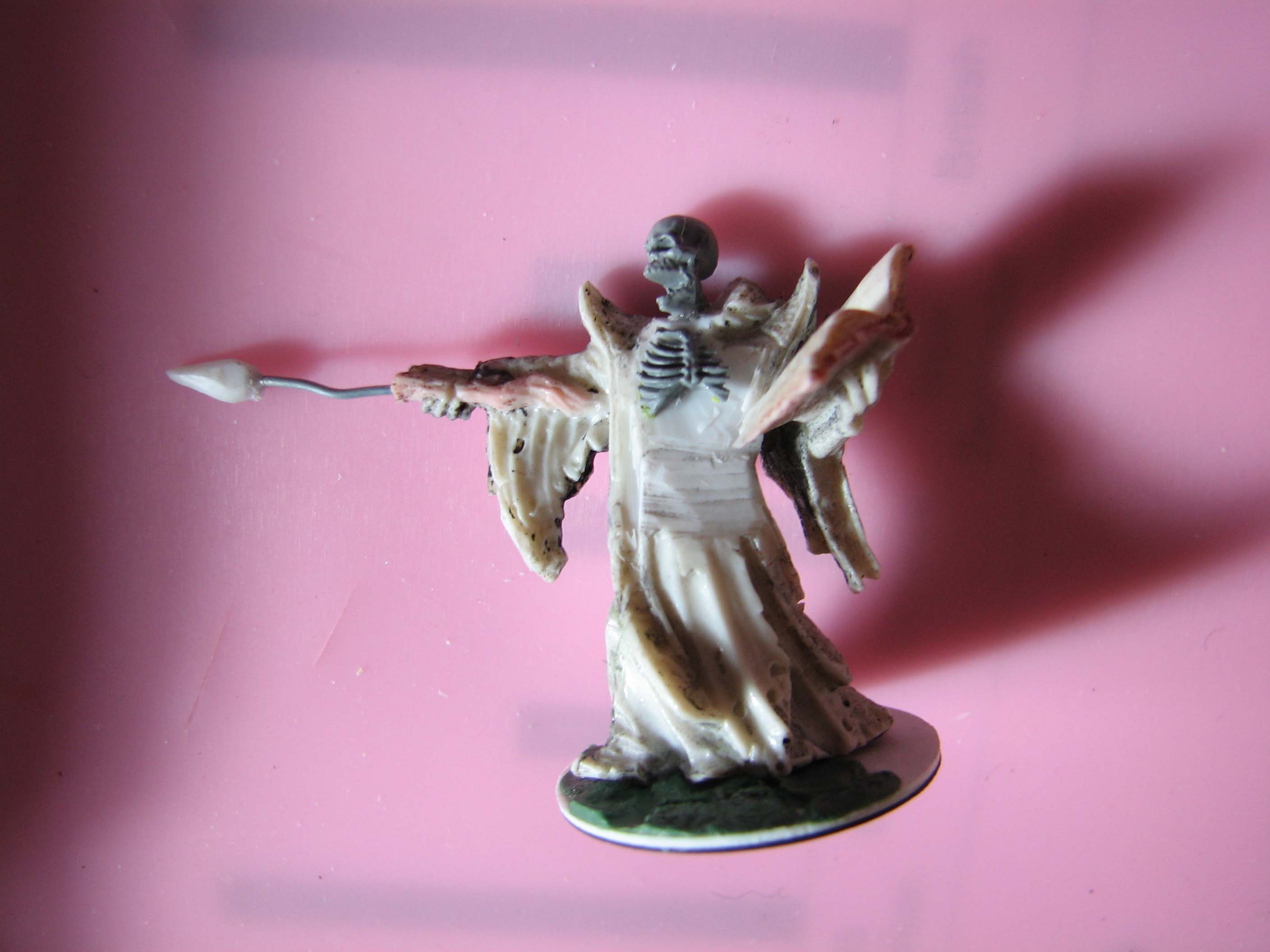
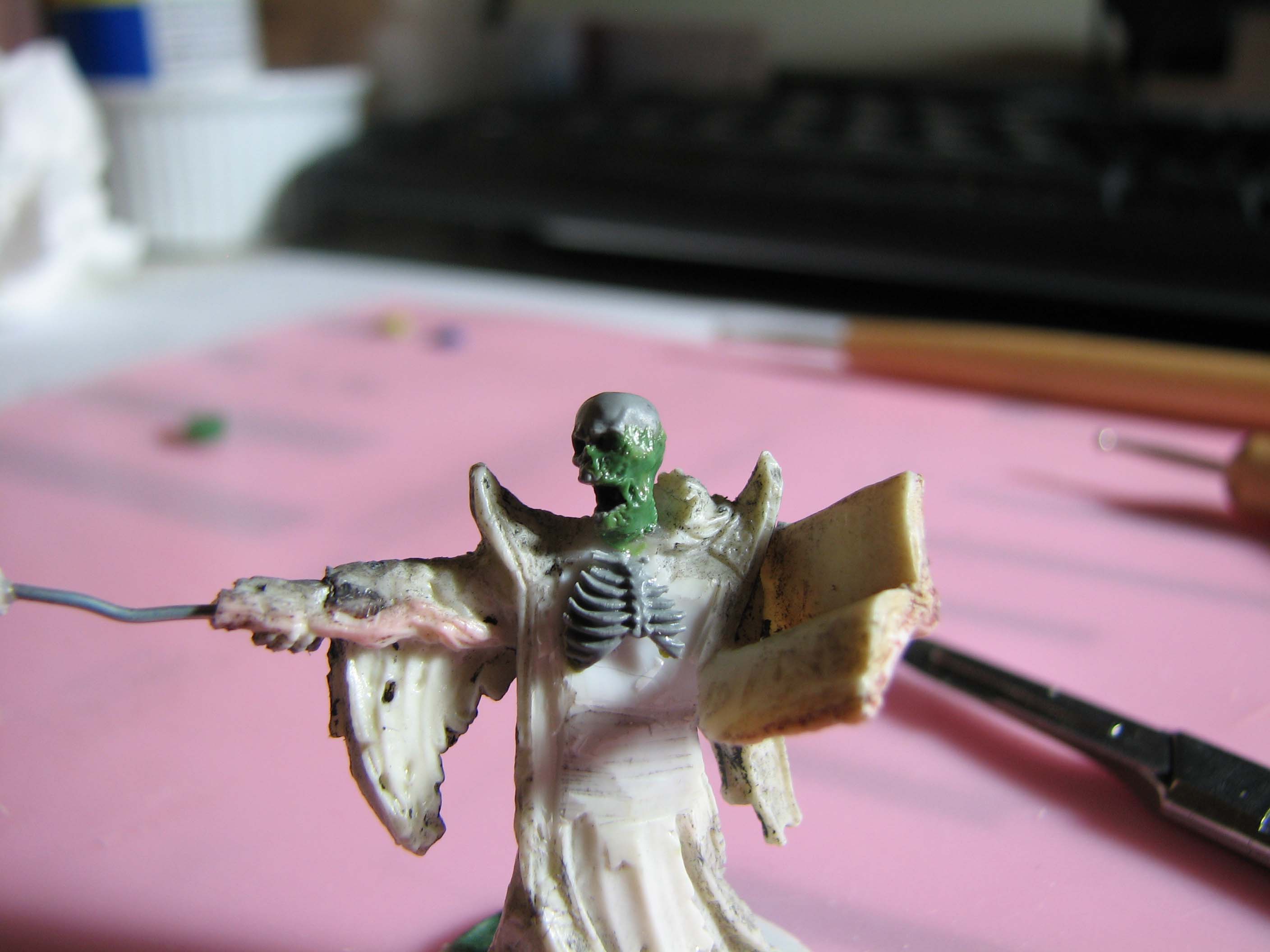

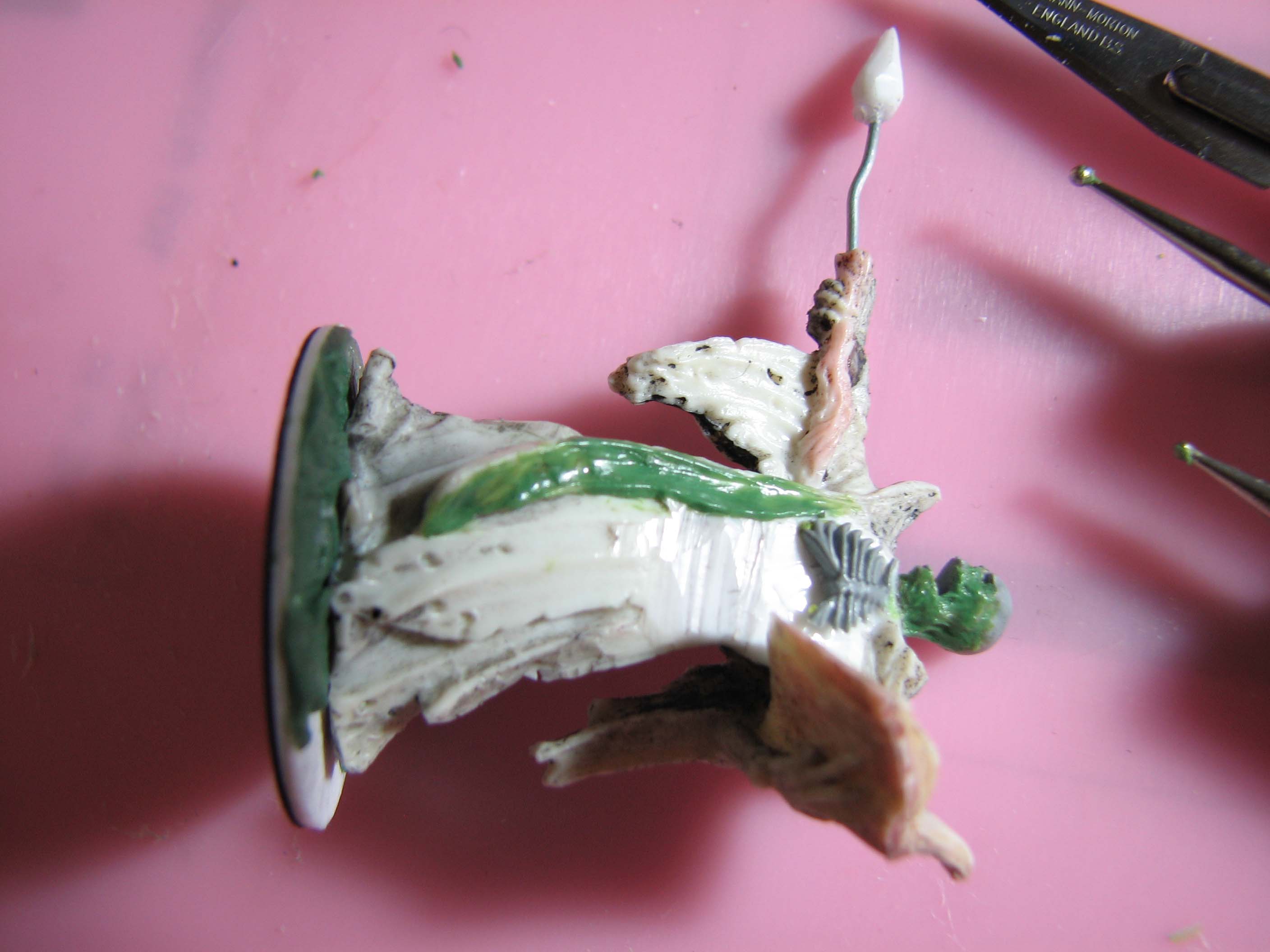

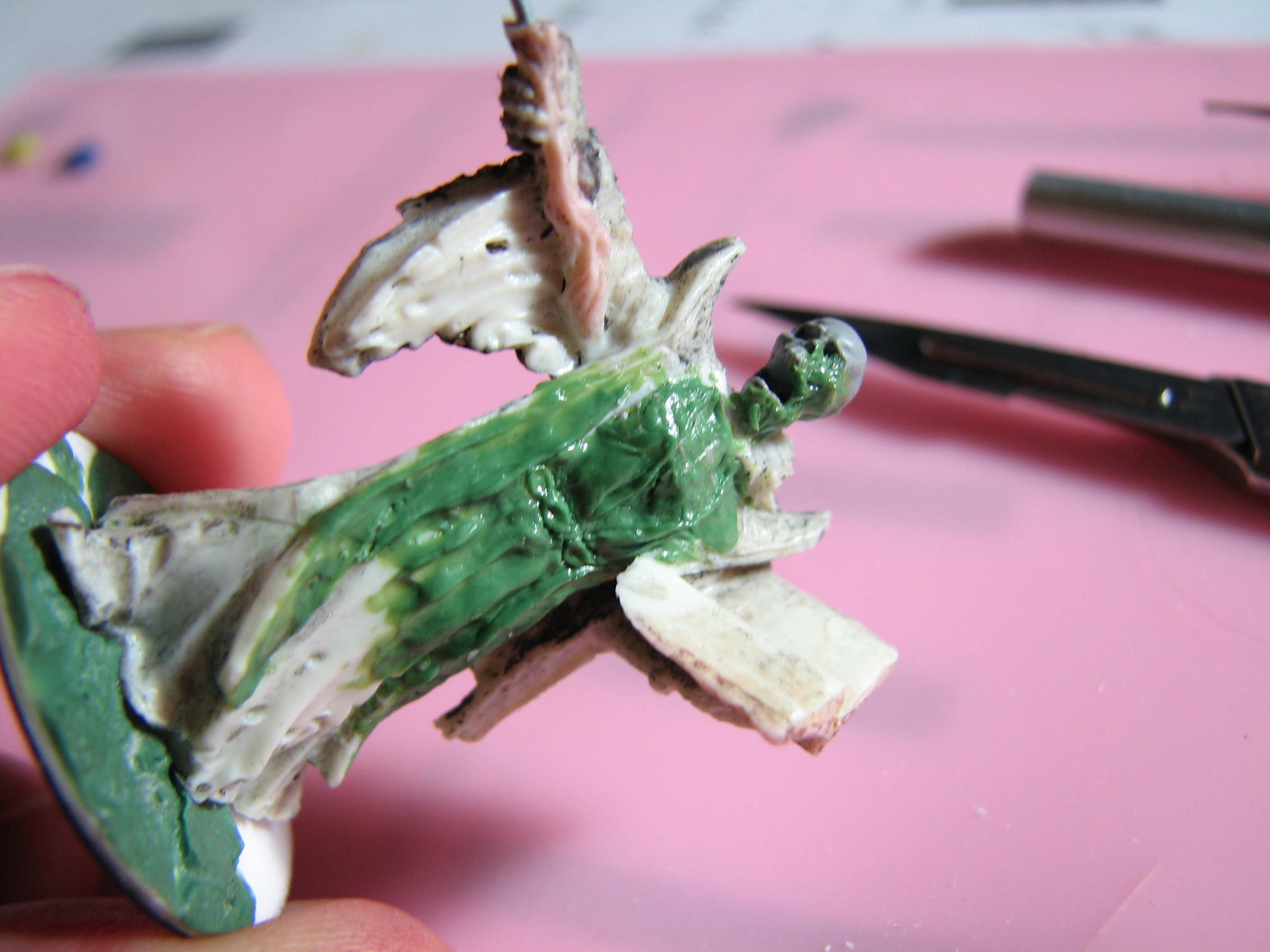
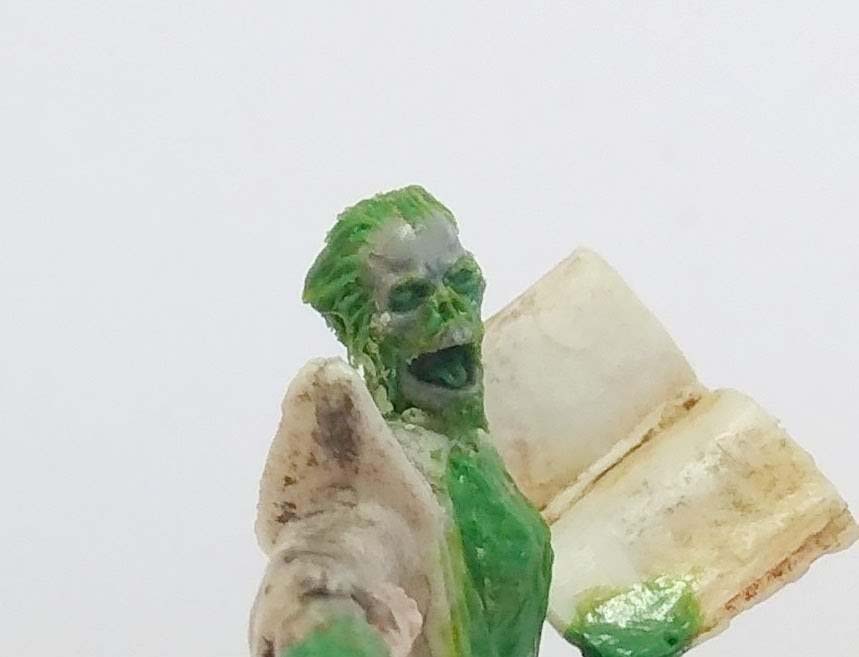
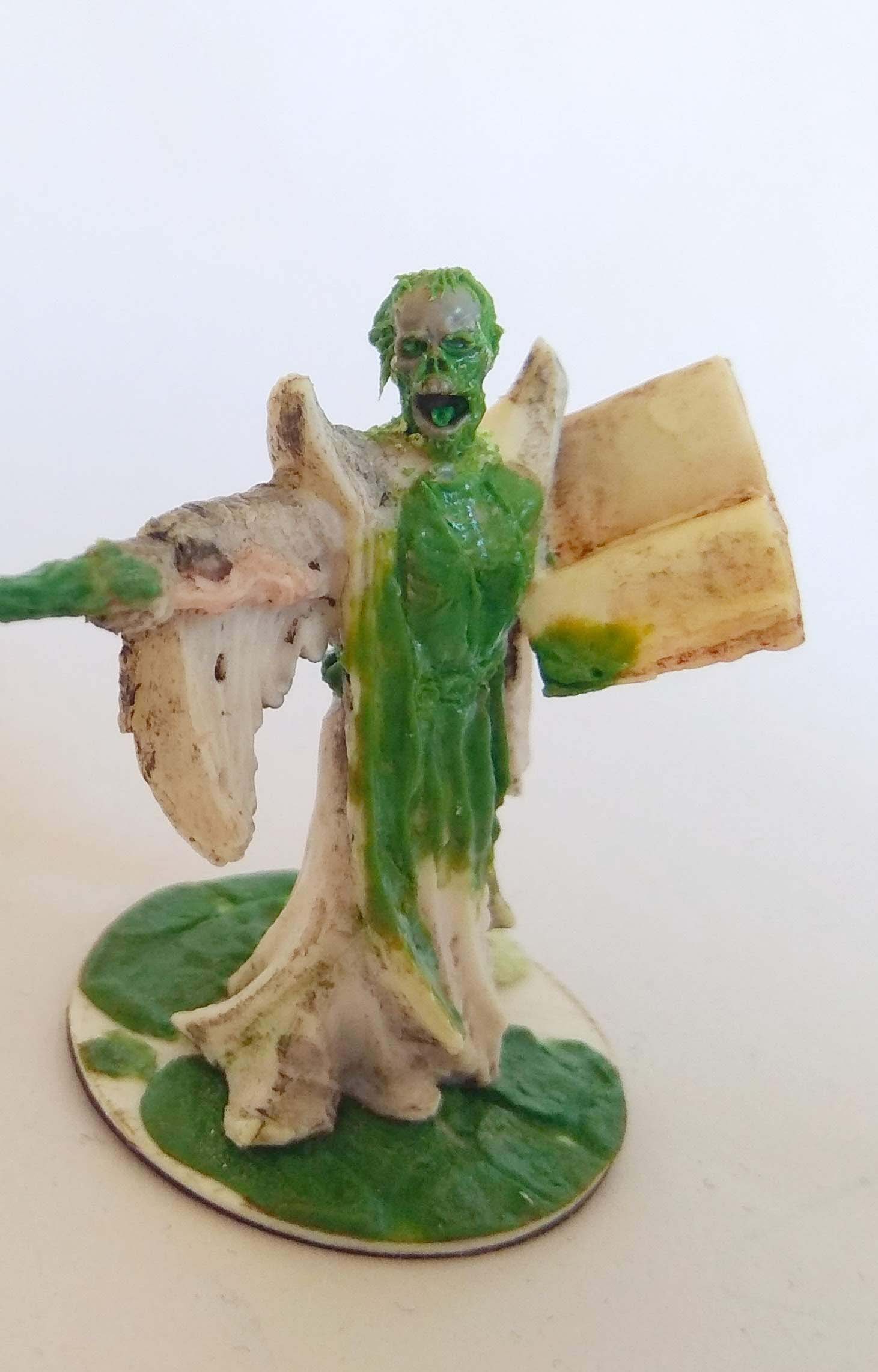
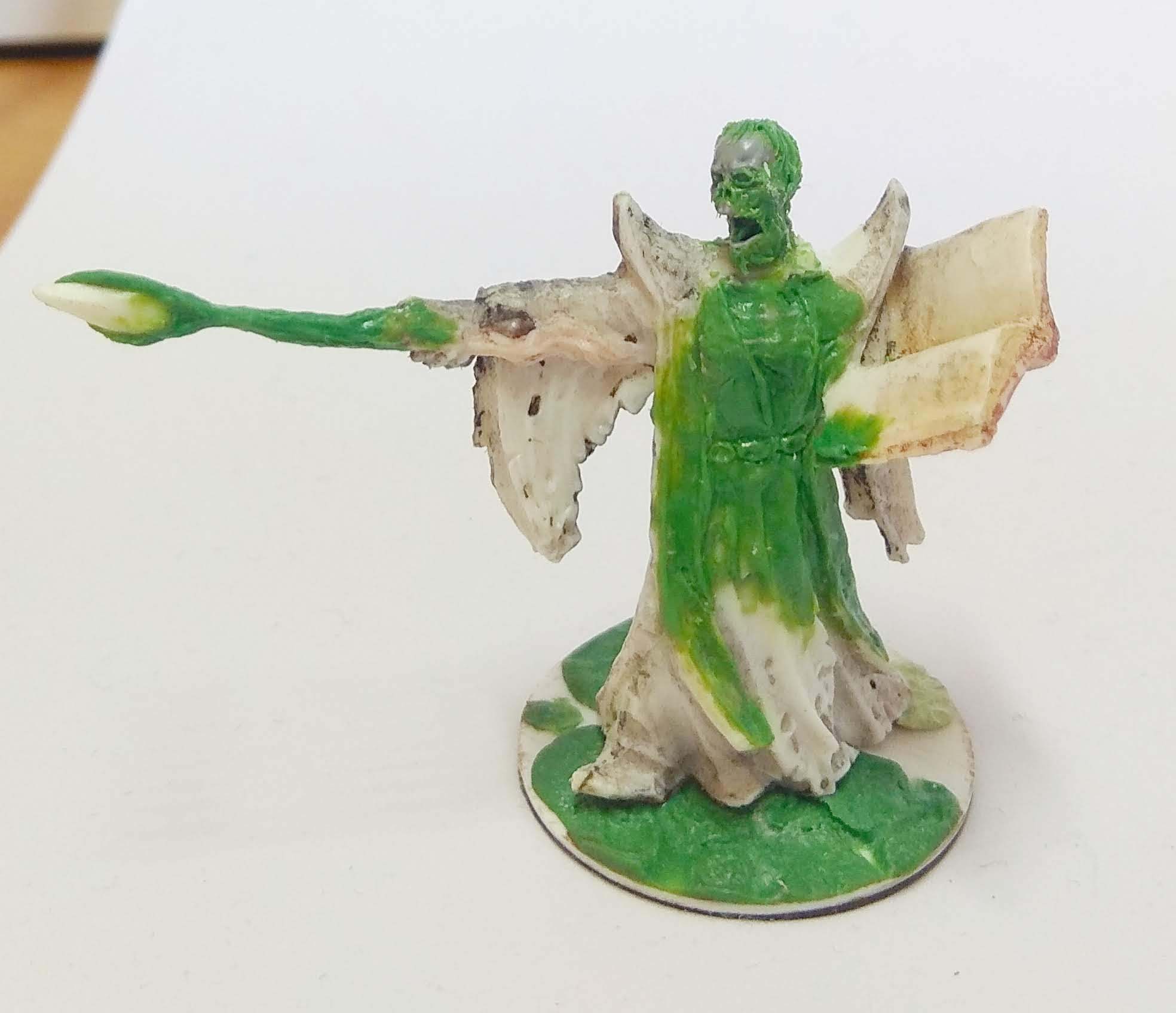
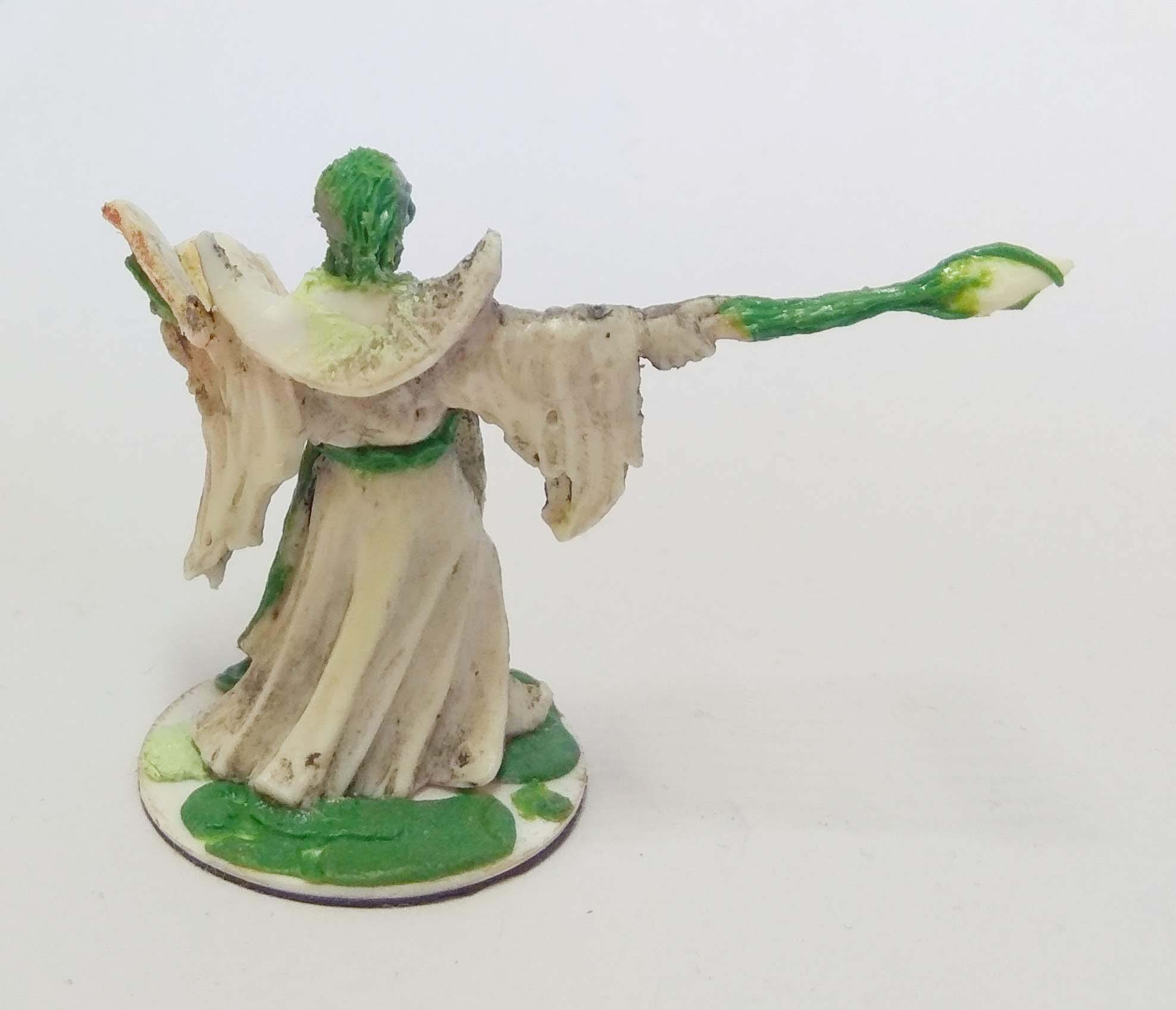
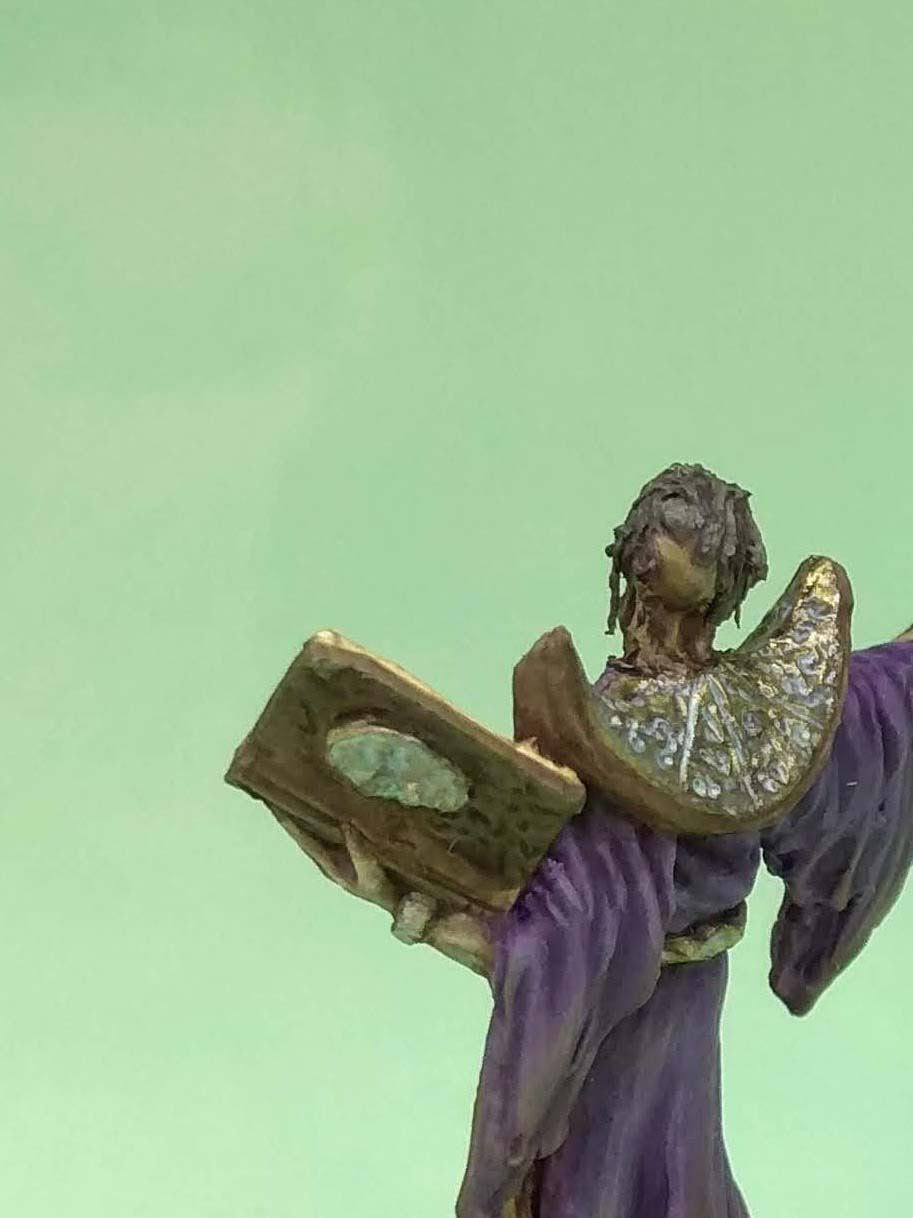

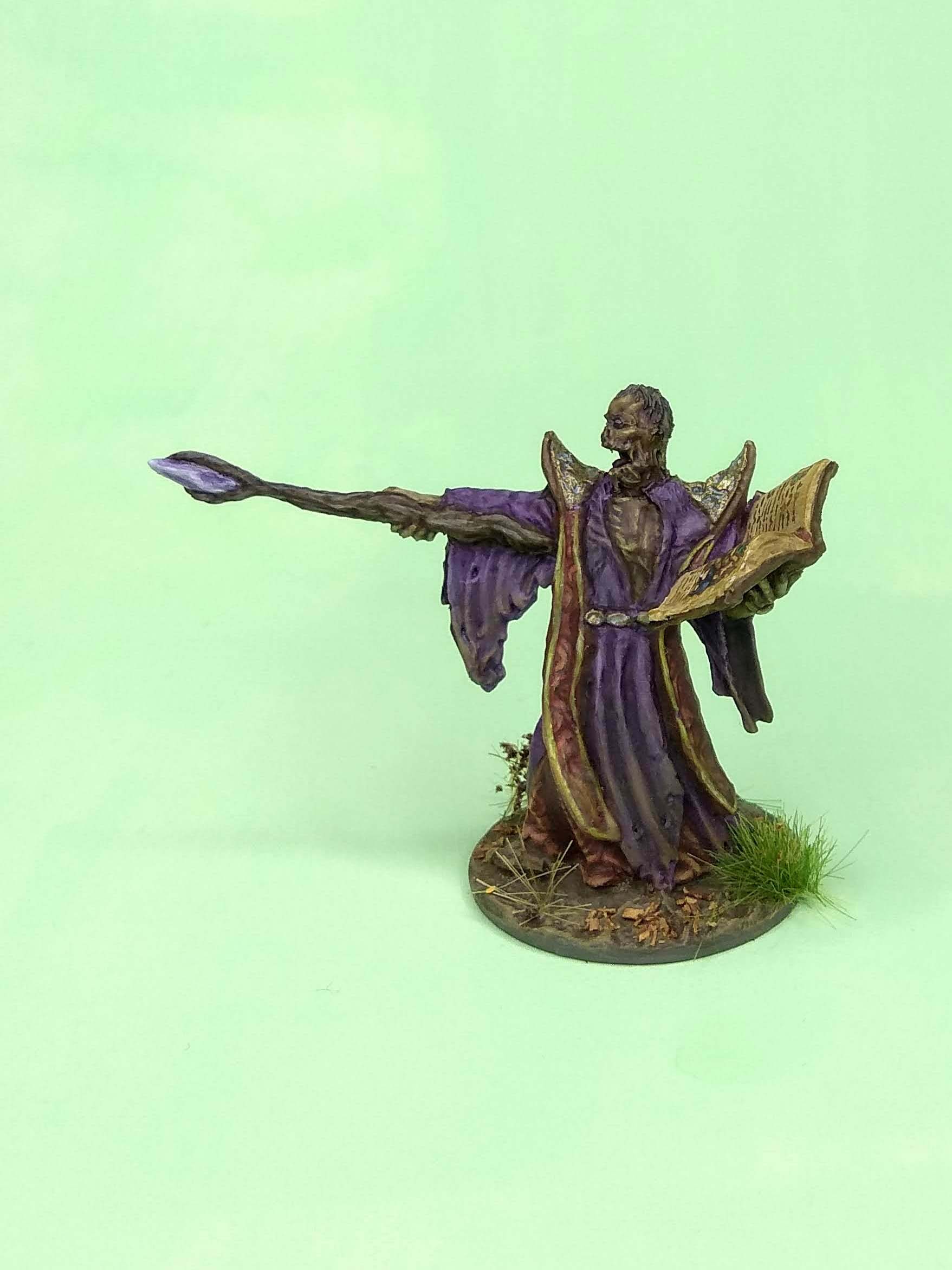
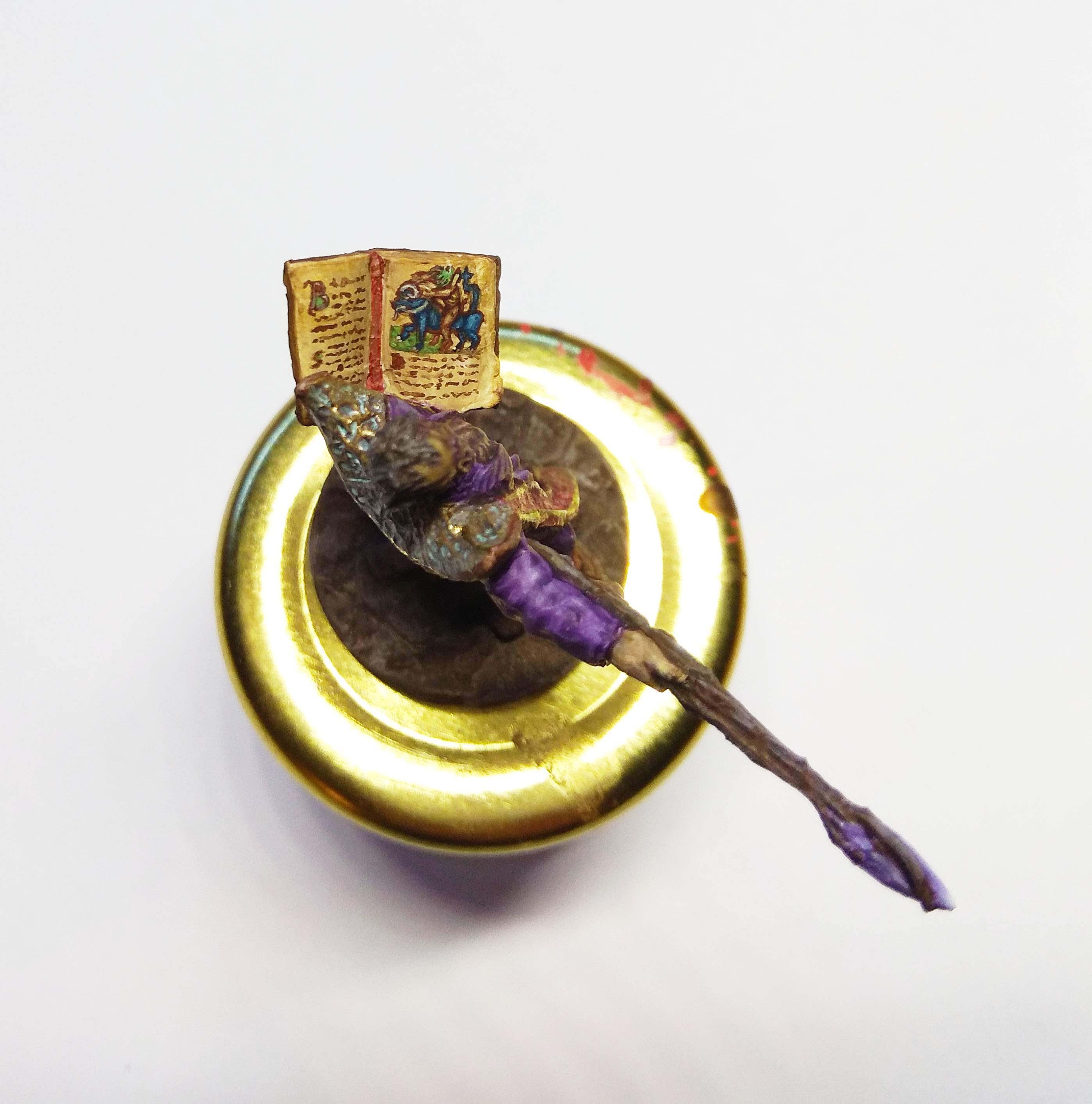
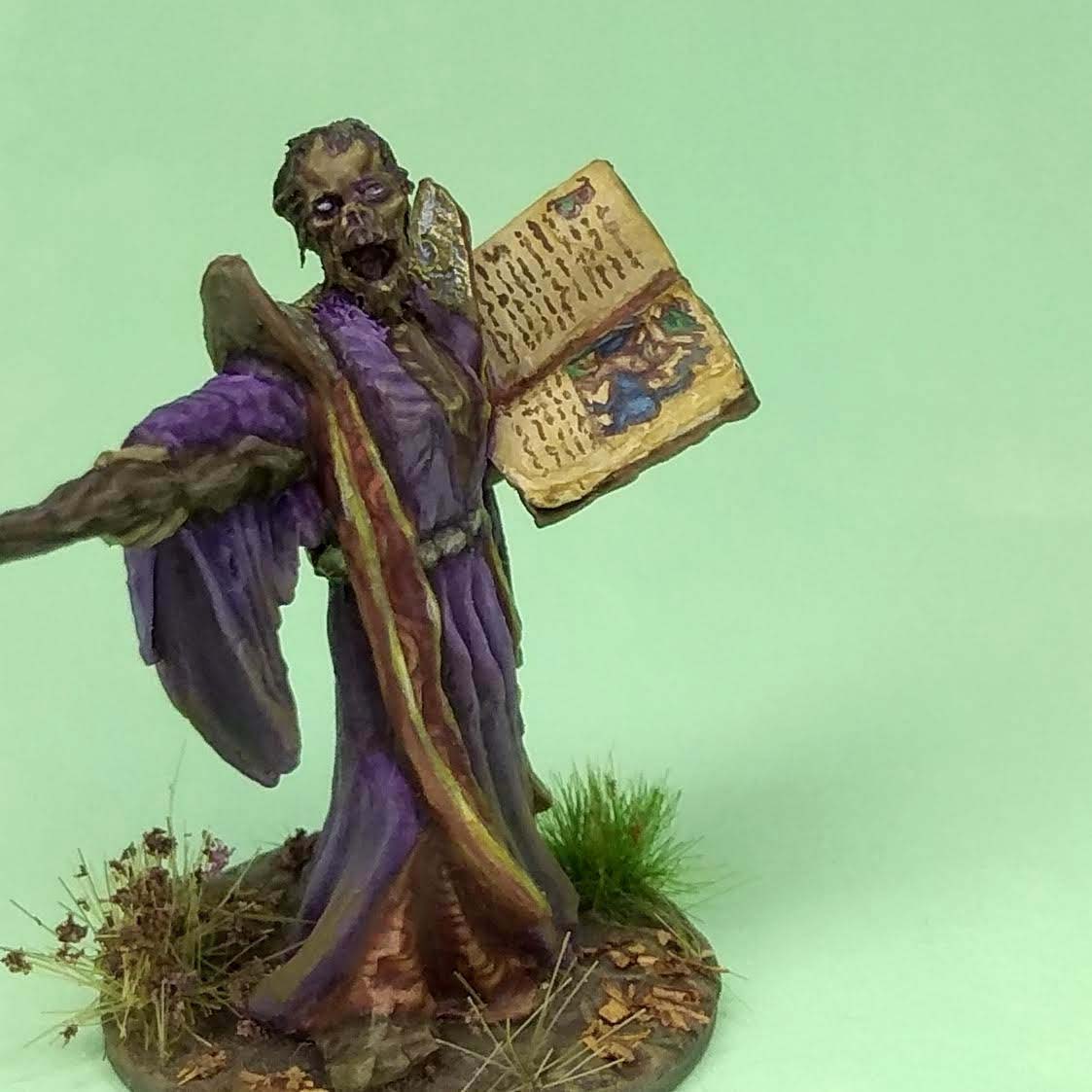
Just amazing
That is a pretty fantastic conversion and the freehand on the book is wonderful Great stuff!
Thank you Ann. I have a wizard in the works where a spell scroll would warrant a similar treatment.
Absolutely brilliant conversion man
Thank you! It took years to complete it, due to my habit of starting conversions and then abandoning them in a drawer. I guess I just needed a bit of motivation to finish the last details and painting him up.
Really nice job on the conversion. That had to have taken some patience to get together. My favorite detail was the manuscript which has a lot of detail for such a small piece of the overall composition. It is funny because a Necromancer is a common subject for fantasy miniatures but there aren’t many great minis of them that I can think of. I like yours about as well as any I’ve seen 🙂
Thank you Kuribo, high praise indeed! I think most Necromancers or Lich miniatures are a tad over the top. Leisynn definitely looks crazed and has skulls aplenty. I like more subtle miniatures, so I tried to focus on the face and book, but removed the wacky detailing.
I am also working on a female Necromancer. Most available ones are pin-up style, so she will be more sensible and mysterious.
Over the top is a good way to describe them I would say and I’ll be looking forward to that female Necromancer 🙂
Fantastic conversion! And the detail on that book is just wonderful!
Thank you Dacey. The book was fiddly and I not entirely sure if it looks like the reference. Next time I go for something simpler or maybe more abstract.
I can only imagine how fiddly it was. I’e only dabbled in painting book pages, I usually take the easy way out and scribble some lines to look like text using a micron pen and call it a day.
I think the illustration looks like the reference in a sort of abstract way, though I may not be able to identify it without the reference. That more to do with lack of familiarity of the original image, though. I look forward to seeing what you try next time you’ve got the opportunity to paint a book. 🙂
I think for proper verisimilitude the body of the devil and especially face would need to be slimmer and more detailed. Behemoth kinda works, but here, too, the proportions are a tad wonky. Next up will be a spell scroll, so I might try some more abstract shapes.
I might try sketching with the micron pen.
It most freaking certainly does! I bet a medieval manuscripts enthusiast will see the mini and do a double-take 😀
Thank you! i guess if you are familiar with it, it might just look like something you cam across.
Hell of a great job!
Thanks! I am glad I finally finished the conversion. Took me two years from the first cut to basing.
Absolutely brilliant work, and some handy tips in there too
Much obliged. Glad some of the tips are useful for your own projects.
Awsome conversion! I am by far not as talented as You, but exactly thats way, maybe I have a useful hint: I make such small writings and freehands (at least the outlines) with a fineliner (0,1 or even 0,05mm), and I think its much easier than with a brush.
Thank you! I think I will try it the next time I have to tackle a scroll or book. For the outlines the fineliner might give me more control. I tried it on eyes and had good results, too. The main issue was, that the paint surface can be a bit uneven and at least the pupils were not perfectly round. That said, for squiggly lines or a sketch it should not affect the results.
That’s a heck of a conversion and paint job. Bravo!
Thank you. I think it was the first time I changed more than just a head or weapon. Given the original sculpt was not my cup of tea it offered plenty of opportunity to try some sculpting techniques.